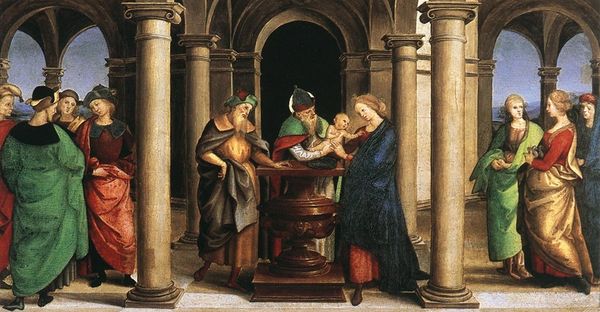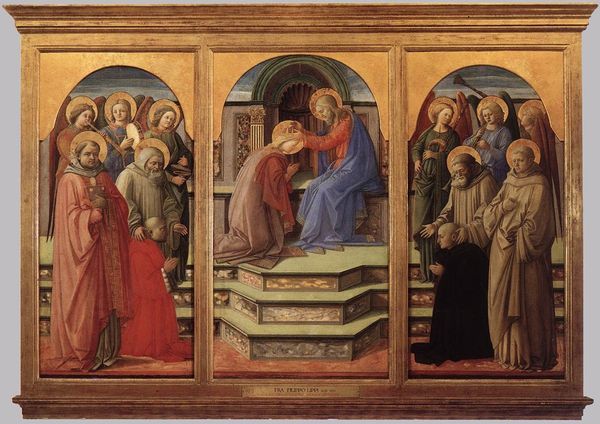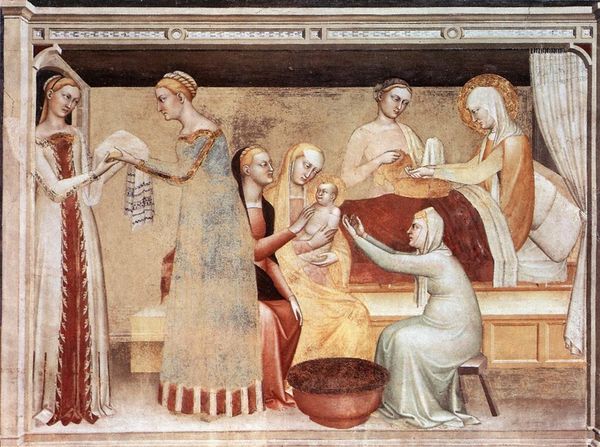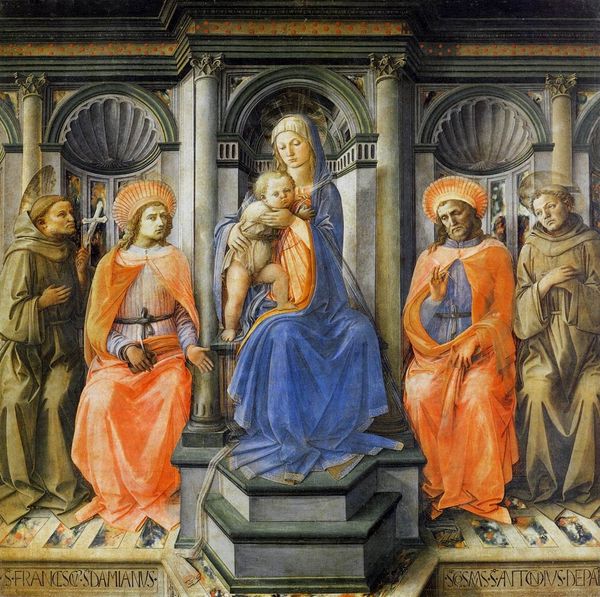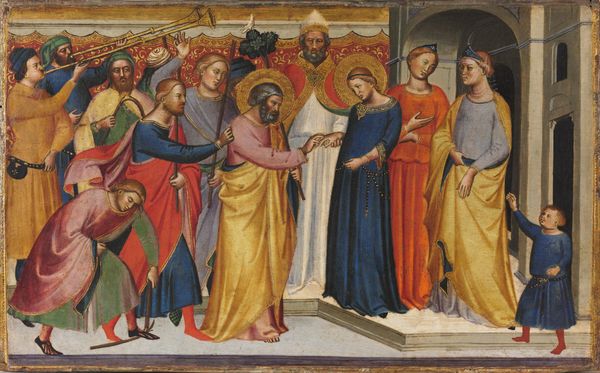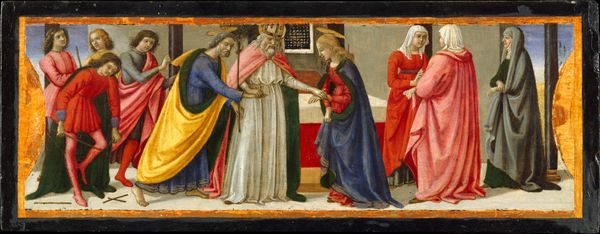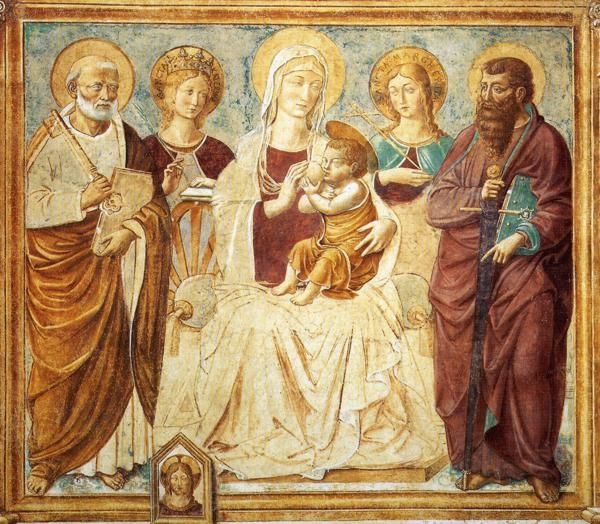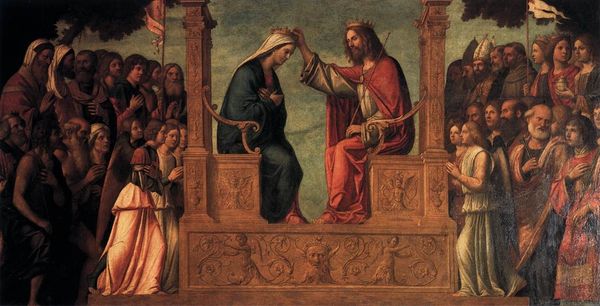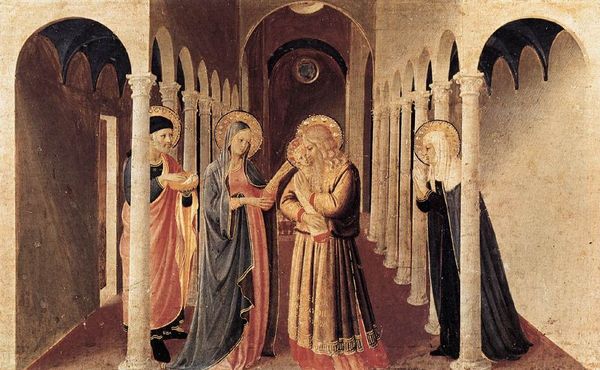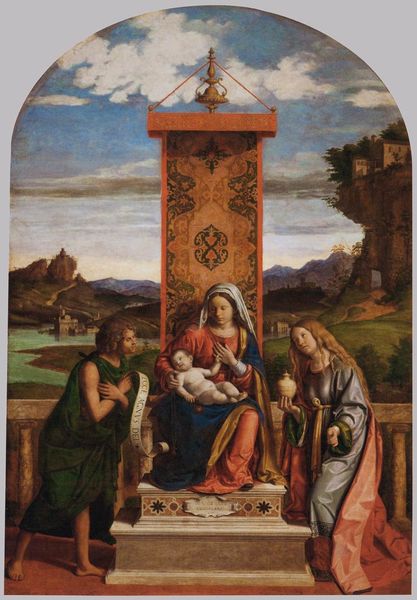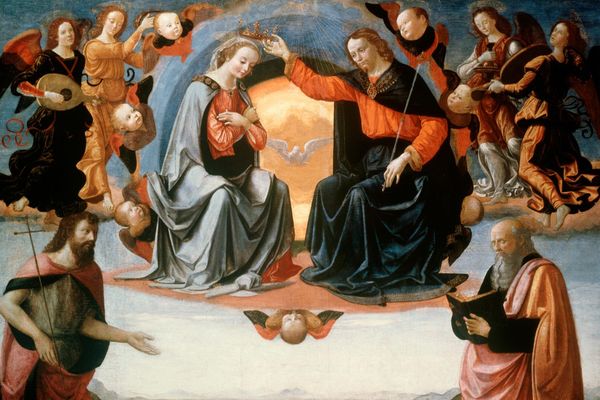
painting, oil-paint
#
high-renaissance
#
narrative-art
#
painting
#
oil-paint
#
figuration
#
oil painting
#
history-painting
#
italian-renaissance
Copyright: Public domain
Curator: Standing before us is “Circumcision” attributed to Mariotto Albertinelli, an oil painting rooted in the Italian Renaissance. Editor: Immediately I'm struck by the formal balance, even stillness. It almost feels like a staged tableau. The colors are soft, and muted... there's a distinct sense of peace in this ritual moment. Curator: Right, and within that peace there's a tension, I think, because you know what’s about to happen to the baby. He’s presented so gently by Mary, who seems incredibly calm. The light focuses on him—it’s a little unsettling. Editor: Exactly. This act of religious devotion is overlaid with, frankly, bodily violation. Is the intention to subtly contrast purity and pain? I am so conscious of how patriarchal circumcision as a ritual practice is even as Mary appears, shrouded yet powerful at its very center. It raises crucial questions, I feel, about religious law, female agency, and bodily autonomy. Curator: That’s interesting. I wonder, too, if Mariotto was drawn to the way the human form—and, in this case, the infant's vulnerability—could express profound spiritual ideas. Look at the architectural backdrop – it’s beautifully rendered, but almost serves as a stage to bring these figures forward, especially the High Priest. His stance radiates absolute authority. Editor: Absolutely, a very clever compositional move which reminds me of the long history of power relations intertwined with religious representation in Renaissance art. That the High Priest stands at the apex really contextualizes what’s occurring – it’s an illustration and legitimization of hierarchy. Curator: In closing, what stands out is the incredible juxtaposition. It offers a contemplative beauty, really, while hinting at this intense historical and cultural context, but for me there is always the undeniable artistry in Albertinelli's representation. Editor: For me, Albertinelli's painting evokes both the tenderness and the troubling societal constructs inherent in its depiction. Thank you.
Comments
No comments
Be the first to comment and join the conversation on the ultimate creative platform.
